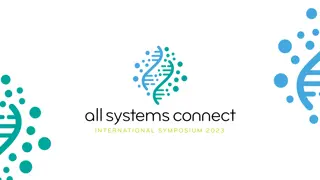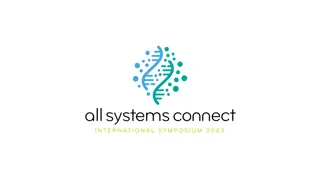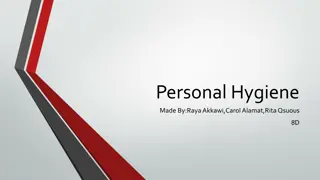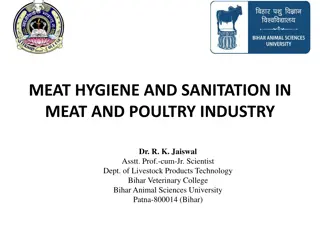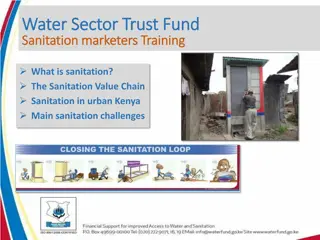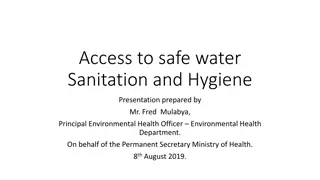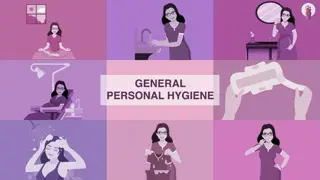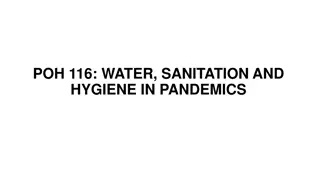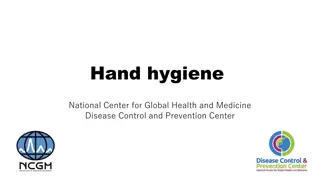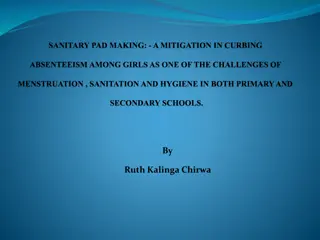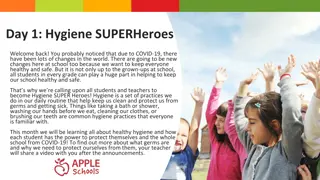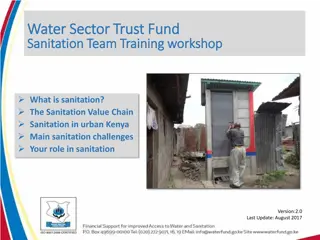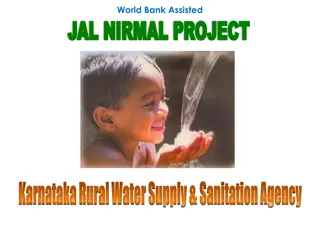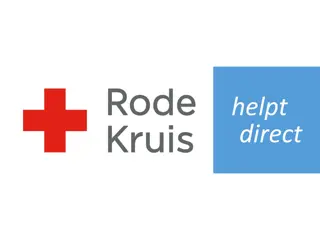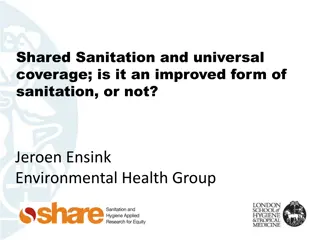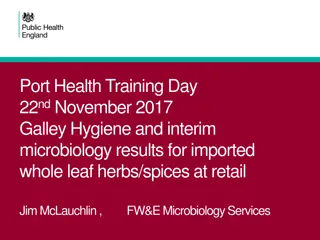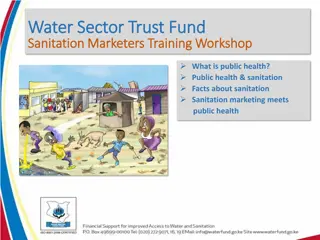Enhancing Hygiene and Sanitation Education in Schools
Explore the importance of Water, Sanitation, and Hygiene (WaSH) initiatives in schools, focusing on the integration of hygiene education, promoting sustainable practices, and involving communities. Learn about the principles of visibility, inclusivity, and sustainability in implementing WaSH programs, and how curriculum standards can be utilized to teach crucial hygiene habits to young learners.
- Hygiene education
- Sanitation practices
- Community involvement
- Curriculum standards
- Sustainable initiatives
Uploaded on Sep 13, 2024 | 0 Views
Download Presentation

Please find below an Image/Link to download the presentation.
The content on the website is provided AS IS for your information and personal use only. It may not be sold, licensed, or shared on other websites without obtaining consent from the author. Download presentation by click this link. If you encounter any issues during the download, it is possible that the publisher has removed the file from their server.
E N D
Presentation Transcript
WaSH In Schools: the classroom component Carolyn Johnson Yarmouth Rotary, Maine, USA Chair, BELRAG (Basic Education & Literacy Rotary Action Group) WinS Target Challenge Advisory Committee cfj2@icloud.com
Bring the toilets into the classrooms, then into the homes Trustee Sushil Gupta Chair of the WASH in Schools Committee Rotary Foundation Trustee 2014-18 Trustee Sushil led the effort to create the Target Challenge strategy by working with fellow Rotarians, Rotary Staff and colleagues at UNICEF. He chaired the WASH in Schools Target Challenge Committee, which guides and directs the pilot program. WinS was conceived in 2013, to bring two Areas of Focus together to work collaboratively and to enhance the work of each. In 2014, a working group was developed to create a framework. The WinS Target Challenge Pilot was adopted by the Trustees.
Hygiene Education vs Hygiene Promotion - - work together younger children peers family community - - - spread knowledge teach skills demonstrate by example A child or group of children - - -
WASH in Schools Three main principles: Visible: throughout the school & the school day. Impact on school culture. Inclusive: reach every child at an appropriate level. Involve, families, teachers, wider community Sustainable: improve instruction by incorporating WASH principles into the curriculum and learning
Using Curriculum Standards to promote hygiene habits Grade 2 Curriculum Standards Ministry of Education, Guatemala (Sciences, Communication & Language) WASH Activities Hand Washing Practice hygiene habits to keep you and your community healthy Demonstrate listening comprehension skills in various contexts Interview others to learn information Use oral & written language to express opinions Use informative or creative writing to share and explain information Present information indifferent ways Use the toilet, latrine Bath daily, wash hands, keep clean Identify cause & effect of common illnesses in your community Drink safe water Use preventative basics to prevent gastrointestinal illnesses Personal Hygiene identify forms of water contamination Use natural resources carefully, understand the importance of the water cycle
WaSH connections & Enhancements to the curriculum Science germs - where do they live? transmitting diseases water cycle / water properties how water gets contaminated food contamination Organic vs chemical fertilizers Technology Math How much water do you need (daily, weekly, monthly) drinking bathing cleaning crops volume (fecal matter management, storage) size, capacity, and production per capita of community water system Statistics, charts, graphs Geography water sources maps of water tables, waterways Teachers Guide to Integrating WASH in Schools (USAID, SPLASH, Zambia Ministry of Education)
Integrate into the curriculum Language Arts (reading, writing, listening, speaking) write stories (big books, little books) to share information (what was taught - a good way to check for for understanding) read books about the topics dramatize what you ve learned (share with younger students or the community) Civics, history, social sciences national sanitation policies water influence on community growth or policies traditional practices about water, hygiene
Sustainability: Improve the quality of instruction by supporting teachers Make it easy for teachers to use Identify a few lessons to incorporate WASH (age/grade appropriate) interactive planning sessions classroom resources offer support find out if it works, problem solve, adjust Community Assessment: find out what teachers know, how they teach, professional development Introduce effective teaching strategies Water. Sanitation. Hygiene. Education. literacy. A guide to WASH in Schools Rotary International, 2017
Schools Play an Important Role in Hygiene Practices Hygiene messages in school curricula, community outreach activities and school health clubs can play a pivotal role in promoting good together with the provision of safe sanitation and drinking-water. children are included in programs as active participants and active learners, they become powerful agents of change in their own households and in their communities by passing on messages about good hygiene practices. As future generations of adults, critical to ensuring the sustainability of behavior change. hygiene practices, When children are
Carolyn Johnson cfj2@icloud.com



